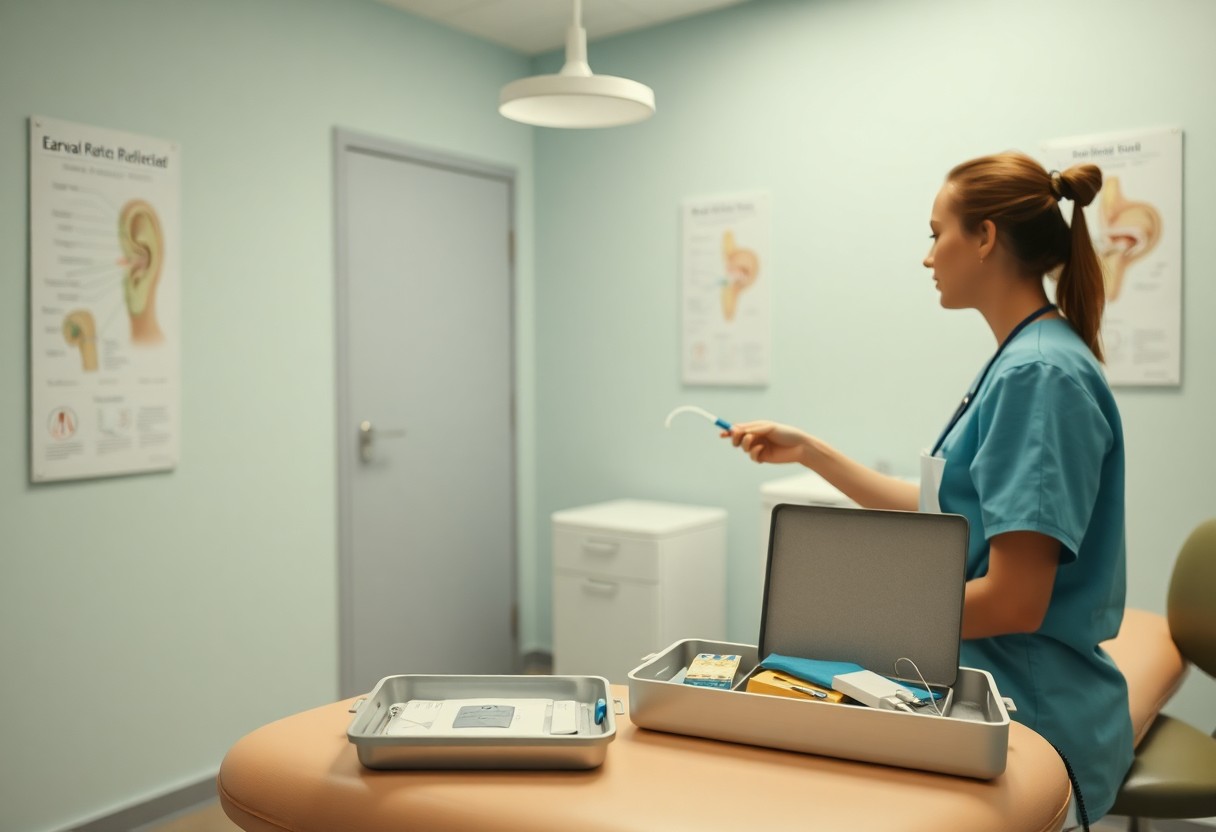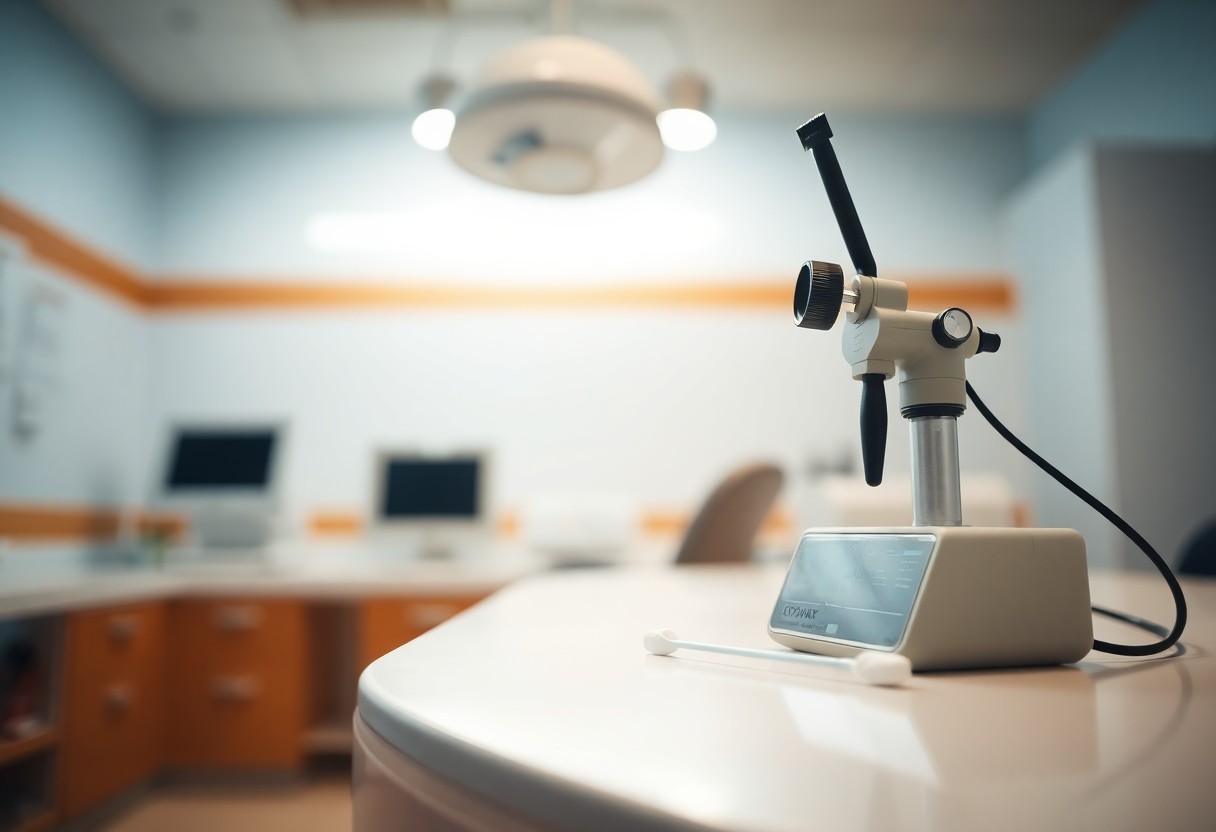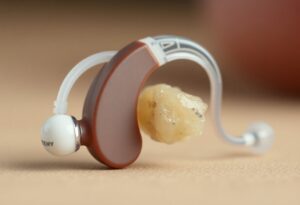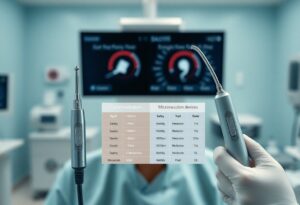It’s important to understand when earwax buildup requires professional attention. While earwax is a natural substance that protects your ears, excessive accumulation can lead to discomfort, hearing loss, or infection. If you’re experiencing symptoms such as ear pain, ringing in the ears, or a sensation of fullness, it’s time to consult a doctor. This guide will help you identify the signs that indicate you should seek medical assistance for earwax removal, ensuring your ear health is effectively managed.
Key Takeaways:
- Seek medical attention if experiencing symptoms like hearing loss, pain, or discomfort.
- Avoid home remedies if there is a history of ear infections or eardrum perforation.
- Consult a doctor for safe and effective earwax removal, particularly if buildup is frequent or problematic.
The Anatomy of Earwax: Why You Should Care
The Role of Earwax in Ear Health
Earwax, or cerumen, plays a vital role in your ear health by providing a protective barrier against dust, debris, and microorganisms. It helps maintain the skin within the ear canal, preventing dryness and irritation. The natural movement of your jaw during activities such as talking or chewing aids in moving earwax outward, which keeps your ears clean and free from blockages.
Common Misconceptions about Earwax
Misinformation surrounding earwax often leads to unnecessary worry and improper care. Many believe that earwax buildup is purely a hygiene issue, while in reality, it serves several protective functions. Additionally, some think that excessive earwax production is a sign of poor health, when it can actually vary significantly from person to person based on genetics and environmental factors.
Several myths about earwax can mislead you into thinking it’s harmful or undesirable. For instance, using cotton swabs to clean your ears can push wax further in, potentially causing impaction. Many also assume that all earwax should be removed; however, your body produces just the right amount for protection and lubrication. Understanding these misconceptions will help you better appreciate the balance your body maintains with earwax for optimal ear health.
Recognizing the Signs: When Earwax Becomes a Problem
Symptoms That Indicate Excess Wax Buildup
Experiencing symptoms such as muffled hearing, ear pain, or a sensation of fullness in your ear can signal that earwax is accumulating excessively. You might also notice ringing in your ears, itching, or drainage. If these symptoms persist or worsen, it’s a sign that you should seek medical evaluation to determine the appropriate course of action.
Differentiating Between Normal and Problematic Earwax
Normal earwax plays an crucial role in ear health by trapping dust and debris. However, problematic earwax leads to discomfort and potential hearing issues. Pay attention to your symptoms; if wax becomes hard and impacted, it can cause various complications, including pain and infection. Knowing the difference between what’s typical and what signals a problem is key to maintaining healthy ears.
Normal earwax is typically soft, light yellow, and often self-cleansing, while problematic earwax may appear dark brown or black and feel hard or dry. If you find yourself constantly needing to clear your ears or experience recurring symptoms despite regular ear hygiene, this might indicate that you have excessive wax buildup. Consulting with a healthcare professional can help clarify if your earwax is within a normal range or if intervention is necessary.
Home Remedies: Safe Alternatives for Earwax Management
Over-the-Counter Solutions: What Works?
Many over-the-counter products are designed to soften earwax, making it easier for your body to expel naturally. Solutions containing carbamide peroxide are particularly effective, as they help to break down the wax. Applying these drops as directed can lead to a gentler removal process, reducing discomfort or risk of injury associated with other methods.
DIY Techniques: Risks and Benefits
Exploring DIY techniques for earwax management can be tempting, but they come with specific risks and benefits. While methods like using warm olive oil or hydrogen peroxide may soften wax, improper application can lead to ear infections or damage to the ear canal. Weighing the convenience against potential harm is vital before proceeding.
Using DIY techniques like olive oil or hydrogen peroxide may provide temporary relief, but risks include irritation and the potential for pushing wax further into the ear. Some individuals report positive results with warm water irrigation at home, but without proper knowledge of technique, you could inadvertently cause more harm. Additionally, if you have a history of ear problems, relying solely on DIY methods can heighten the risk of complications. Always prioritize your safety and consult a healthcare provider if you’re unsure about the best approach for your ear health.

When Self-Care Isn’t Enough: Knowing When to Seek Help
Warning Signs That Demand Professional Attention
If you experience symptoms like persistent ear pain, hearing loss, discomfort, or a noticeable change in earwax color or consistency, it’s time to consult a healthcare professional. These signs often indicate that the earwax build-up has reached a level where home remedies may not suffice, and medical intervention is necessary to prevent further complications.
The Risks of Ignoring Earwax Issues
Neglecting excessive earwax can lead to various complications, including infections, tinnitus, and hearing loss. Over time, impacted earwax may press against the eardrum, causing pain and possibly damaging sensitive structures within the ear, leading to long-term auditory issues. Seeking prompt treatment is necessary to mitigate these risks.

The Professional Approach: What to Expect During an Appointment
Examination Techniques Used by Audiologists
Audiologists use various examination techniques to assess earwax blockage. Common methods include otoscopy, where a lighted instrument inspects the ear canal for wax buildup, and tympanometry, which evaluates eardrum function. You may also undergo hearing tests to determine if earwax is affecting your auditory capabilities. These techniques provide clear insights into your ear health, guiding appropriate treatment options.
Methods of Earwax Removal: Pros and Cons
Audiologists employ several methods to remove earwax, each with unique advantages and disadvantages. Understanding these can help you make informed decisions about your treatment. Below is a comparative overview of common methods.
Methods of Earwax Removal: Pros and Cons
| Method | Pros |
|---|---|
| Suction | Quick, minimal discomfort, effective for larger blockages. |
| Curettage | Highly precise, allows for the removal of stubborn wax. |
| Irrigation | Can clear wax efficiently, often at low cost. |
| Ear drops | Non-invasive, can soften wax for easier removal. |
| Manual removal | Direct control over the removal process. |
| Prescription drops | Effective for severe cases, customized for your needs. |
| Home irrigation kits | Convenient for self-care, can be used at home. |
| Natural remedies | Accessible and safe alternatives. |
| In-office visualization | Allows real-time monitoring of removal progress. |
| Follow-up evaluations | Ensures complete removal and ear health post-treatment. |
Selecting the right method for earwax removal ultimately depends on factors such as the severity of the blockage and personal comfort. For instance, suction and curettage offer precise and effective solutions for larger blockages, while ear drops serve as a gentler, less invasive option. Weighing these pros and cons can help you communicate effectively with your audiologist about the best course of action for your specific situation.
Preventative Measures: Keeping Earwax Under Control
Best Practices for Ear Hygiene
Maintaining ear hygiene involves gentle cleaning methods to avoid irritation or injury. Use a damp cloth to clean the outer ear and avoid inserting objects like cotton swabs into the ear canal, as they can push wax deeper. If you suspect earwax buildup, consider using over-the-counter ear drops designed to soften wax. Regular hygiene checks can help you stay ahead of excessive wax accumulation.
Lifestyle Tips to Minimize Earwax Buildup
Your daily habits significantly affect earwax production. Staying hydrated and maintaining a balanced diet can help keep earwax at healthy levels. Regular use of protective ear coverings in dusty or polluted environments can also minimize irritation and excessive wax production. It’s beneficial to avoid smoking, as tobacco can lead to increased earwax secretion.
- Stay hydrated with plenty of water.
- Adopt a balanced diet rich in nutrients.
- Wear ear protection in noisy or dusty environments.
- Avoid smoking to reduce irritation.
This balanced approach ensures your ears remain healthy and free of excessive buildup. Regular hydration and a healthy diet also support overall body function, which can directly influence ear health. Monitoring your environment and making simple lifestyle changes can create a cleaner, healthier ear environment.
- Consider using a humidifier in dry conditions.
- Avoid frequent exposure to water in your ears.
- Limit the use of earphones or earbuds to reduce irritation.
This can help decrease the amount of irritants that might stimulate excess wax production. By making conscious choices regarding your surrounding conditions and habits, you’ll better manage earwax levels efficiently.
The Myths and Facts: Debunking Common Earwax Misunderstandings
Misconception #1: Ear Candling is Effective
Ear candling is often promoted as a natural remedy for earwax removal, but it lacks scientific backing. This method involves inserting a hollow candle into the ear canal and lighting it, which supposedly creates a vacuum to draw out wax. However, studies have shown that ear candling can actually cause burns and injuries, and it’s ineffective in removing earwax. Relying on this method can lead to more harm than good.
Misconception #2: Frequent Cleaning is Necessary
Your ears are self-cleaning organs, and frequent cleaning can disrupt this natural process. Excessive cleaning can lead to irritation, inflammation, and might push wax deeper into the ear canal. It’s a common belief that regular cleaning is important to maintain hygiene, but too much interference can cause more issues than the wax itself.
Many people assume that routine cleaning prevents earwax buildup, but this isn’t always the case. The ear canal produces cerumen as a protective barrier against dust and bacteria. When cleaning is performed excessively, it can lead to overproduction of earwax as your body tries to compensate for its removal. Specialized cells within your ears naturally migrate wax outward, making frequent cleaning unnecessary. In fact, mild cleaning with a damp cloth on the outer ear is often sufficient to maintain hygiene without disrupting the ear’s self-cleaning abilities.
The Connection Between Earwax and Overall Health
How Ear Health Reflects Broader Health Issues
Your ear health can be indicative of broader health concerns. Conditions such as diabetes and cardiovascular disease may manifest through earwax production or other ear-related symptoms. For instance, excessive earwax could signal issues with your immune system or hormonal imbalances. Being vigilant about changes in your ear health can thus be a proactive way to monitor your overall wellbeing.
The Importance of Regular Hearing Checkups
Regular hearing checkups play a vital role in maintaining ear health and identifying potential issues early on. These appointments provide an opportunity for professional evaluation of your hearing and ear condition, ensuring that any problems, such as excessive earwax accumulation, are promptly addressed. In adults over 50, studies reveal that about one in three people experience noticeable hearing loss, making it imperative to prioritize your hearing health through routine examinations.
More frequent hearing checkups can lead to early detection of various conditions, such as age-related hearing loss or accumulations of earwax that might affect your balance and auditory clarity. If left unattended, these issues may have a compounding effect on your quality of life, leading to social isolation and mental health challenges. By being proactive with your hearing checks, you can maintain not only better ear health but also overall cognitive and emotional wellbeing.
Final Words
Ultimately, you should see a doctor for earwax removal if you experience symptoms such as pain, hearing loss, or persistent itching. Additionally, if you notice discharge or have a history of ear problems, professional evaluation is advisable. It’s important to avoid using cotton swabs or other objects that can push wax further into the ear canal. By consulting a healthcare provider, you ensure safe and effective treatment, promoting your ear health and overall well-being.
FAQ
Q: What are the common symptoms that indicate I need to see a doctor for earwax removal?
A: Common symptoms include hearing loss, earache, a feeling of fullness in the ear, tinnitus (ringing in the ears), or drainage from the ear. If these symptoms persist, a doctor’s visit may be necessary.
Q: Can I remove earwax at home, and when should I seek professional help?
A: While some methods like using drops or gentle irrigation can be safe for home use, if you experience pain, bleeding, or a sensation of blockage that doesn’t improve with at-home methods, seeing a doctor is advised.
Q: Is it safe to use cotton swabs for earwax removal?
A: No, using cotton swabs can push earwax deeper into the ear canal and may cause injury or blockage. If there’s excessive earwax buildup, it’s better to consult a doctor.
Q: How often should I have my ears checked for earwax buildup?
A: It depends on individual factors such as earwax production and any history of ear problems. Generally, an annual checkup is sufficient unless you experience symptoms that suggest excess buildup.
Q: Are there any complications if earwax is not removed when needed?
A: Yes, untreated earwax buildup can lead to persistent hearing loss, ear infections, or even dizziness. It’s advisable to seek medical advice if symptoms become bothersome.



